Higher classification Sacculinidae Rank Genus | Scientific name Sacculina Order Barnacle | |
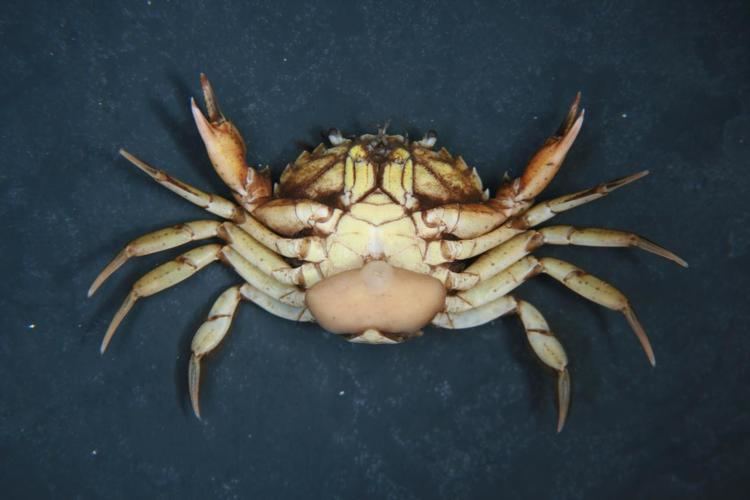 | ||
Similar Barnacle, Crustacean, Rhizocephala, Green‑banded broodsac, Arthropod | ||
Sacculina carcini in a crab from southwest ireland
Sacculina is a genus of barnacles that is a parasitic castrator of crabs. They belong to a group called Rhizocephala. The adults bear no resemblance to the barnacles that cover ships and piers; they are recognised as barnacles because their larval forms are like other members of the barnacle class Cirripedia. Depending on the location, the prevalence of this unusual crustacean parasite in its crab host can be as high as 50%. They are a part of a group of infamous species that are body snatching parasites that infect crustaceans and crayfish.
Contents
- Sacculina carcini in a crab from southwest ireland
- Sacculina carcini on shore crab
- Habitat
- Anatomy
- Life cycle
- Life span
- Biological control agents
- Species
- References
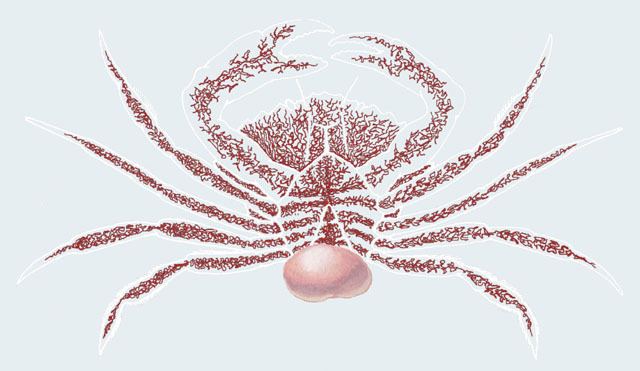
Sacculina carcini on shore crab
Habitat
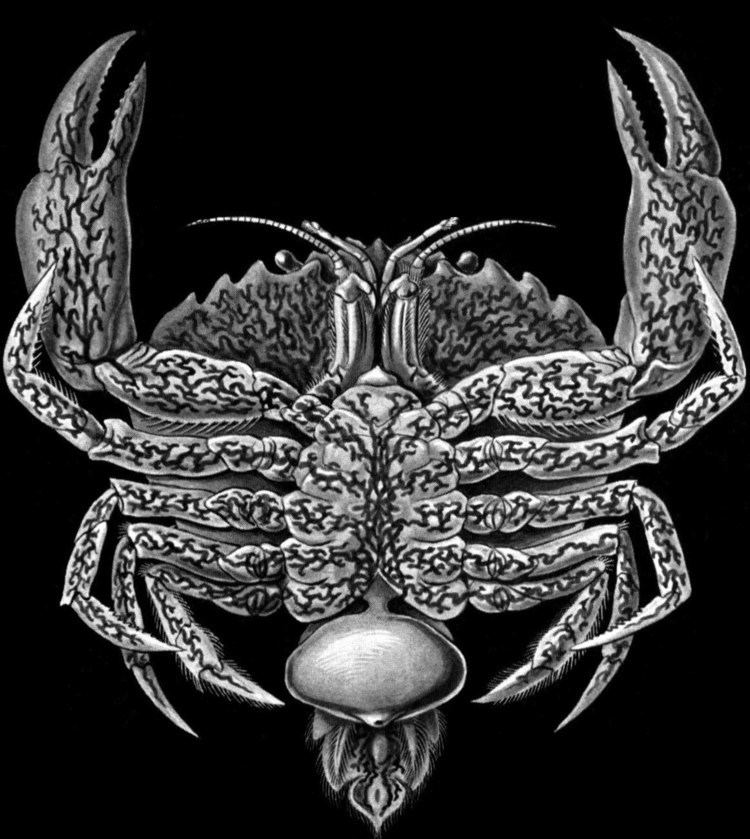
They live in a marine environment. During the span of their larval stage they are pelagic but as they form into an adult they live as an adult in crabs. They primarily host the green crab which is native to the Eastern Atlantic Ocean. Though these crabs have spread to other bodies of waters, it isn't believed Sacculina has migrated along with them to these places too.
Anatomy
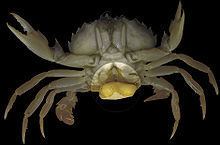
The body of this adult parasite can be divided into two parts: one part is called the "externa" where a bulbous reproductive organ of the parasite sticks out of the abdomen of the host. Then the other part is called the "interna" which is inside the host's body. This part is composed of root like dendrils that wrap themselves around the host's organs which gives its group name already known as Rhizocephala meaning "root-head". Through microCT scans, these roots have been discovered to wrap around certain organs of the body with most around the hepatopancreas which is found in crustaceans. This area is primarily for sucking up nutrients which would understandable why most concentrate in that region. In a similar specie called Briarosaccus roots were seen extending to the brain and central nervous system which could help explain how parasites like these can manipulate their hosts behavior.
Life cycle
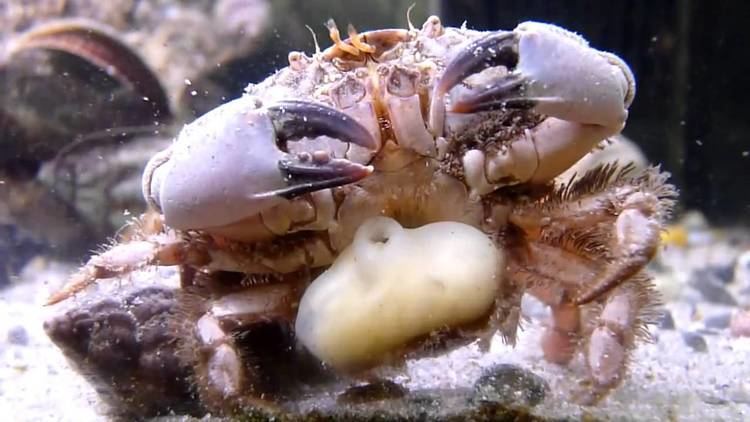
The female Sacculina larva finds a crab and walks on it until it finds a joint. It then molts into a form called a kentrogon, which injects its soft body into the crab while its shell falls off. The Sacculina grows in the crab, emerging as a sac, known as an externa, on the underside of the crab's rear thorax, where the crab's eggs would be incubated.
After this invasion of the Sacculina, the crab is now unable to perform the normal function of molting. This results in a loss of nutrition for the crab, and impairs its overall growth. The natural ability of regrowing a severed claw that is commonly used for defense purposes is therefore lost after the infestation of Sacculina.
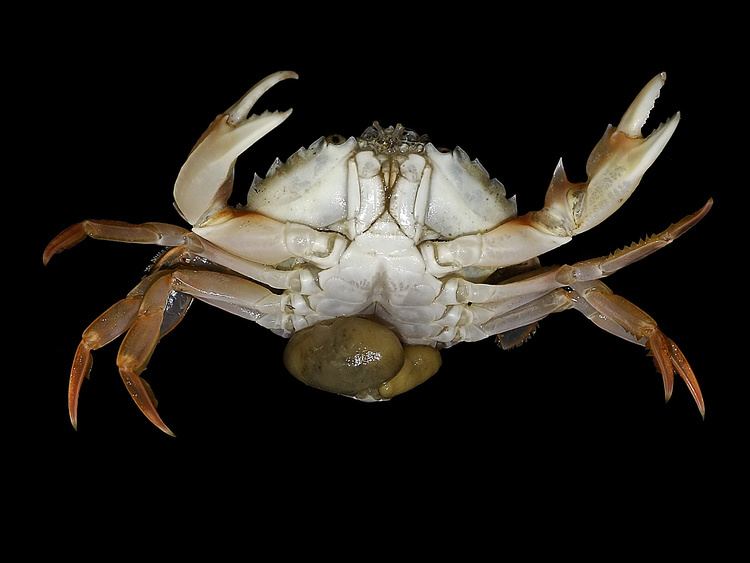
The male Sacculina looks for a female Sacculina adult on the underside of a crab. He then implants himself into her body and starts fertilizing her eggs. The crab (male or female) then cares for the eggs as if they were its own, having been rendered infertile by the parasite.
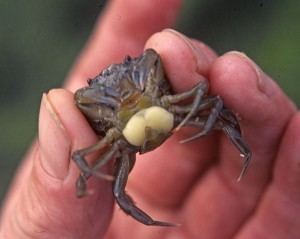
When a female Sacculina is implanted in a male crab it will interfere with the crab's hormonal balance. This sterilizes it and changes the bodily layout of the crab to resemble that of a female crab by widening and flattening its abdomen, among other things. The female Sacculina then forces the crab's body to release hormones, causing it to act like a female crab, even to the point of performing female mating dances.
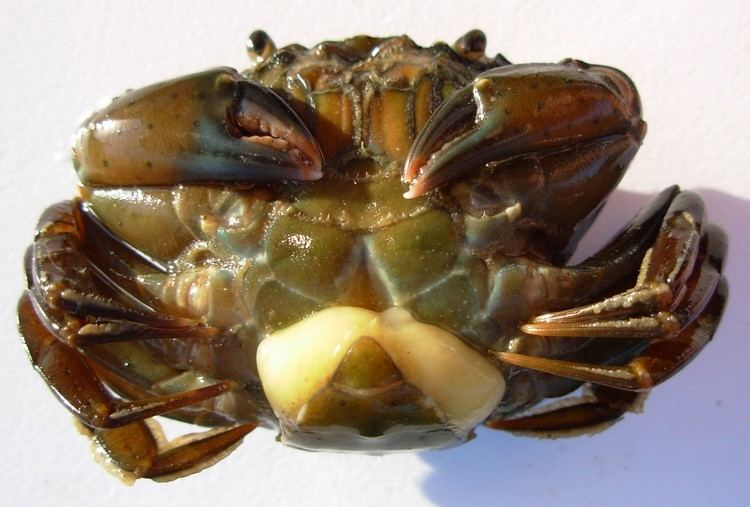
Although all energy otherwise expended on reproduction is directed to the Sacculina, the crab develops a nurturing behavior typical of a female crab. The natural hatching process of a crab consists of the female finding a high rock and grooming its brood pouch on its abdomen and releasing the fertilized eggs in the water through a bobbing motion. The female crab stirs the water with her claw to aid the flow of the water. When the hatching parasite eggs of the Sacculina are ready to emerge from the brood pouch of Sacculina, the crab performs a similar process. The crab shoots them out through pulses creating a large cloud of parasites. The crab then uses the familiar technique of stirring the water to aid in flow.
Life span
They are primarily host dependent so their life span matches that of their hosts. Crabs usually have a life span anywhere from 1 to 2 years.
Biological control agents
Sacculina has been suggested to be used as a type of biological control agent to help reduce the populations of the invasive green crab. This is controversial because the Sacculina can also use native crab species as their host.
Species
More than 100 species of Sacculina are currently recognised:
